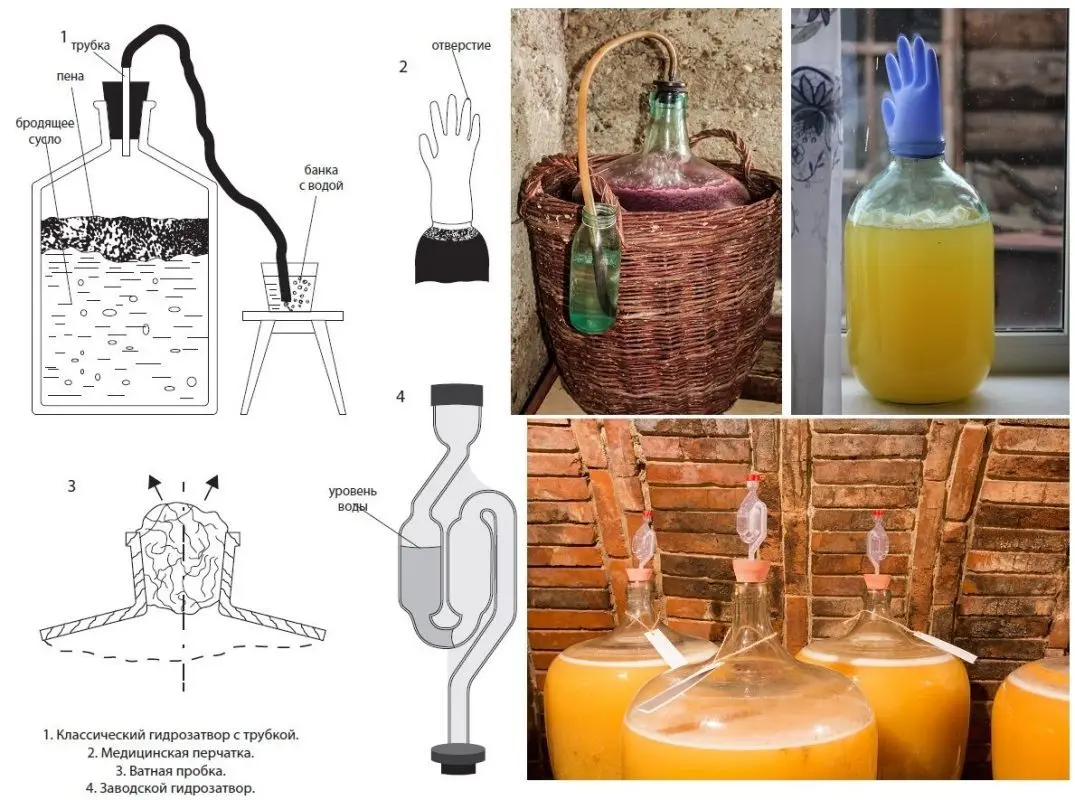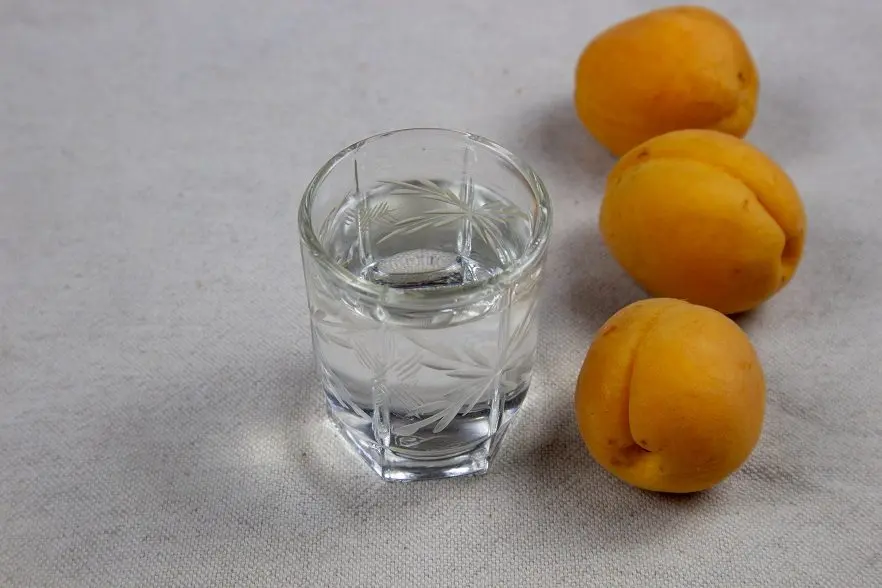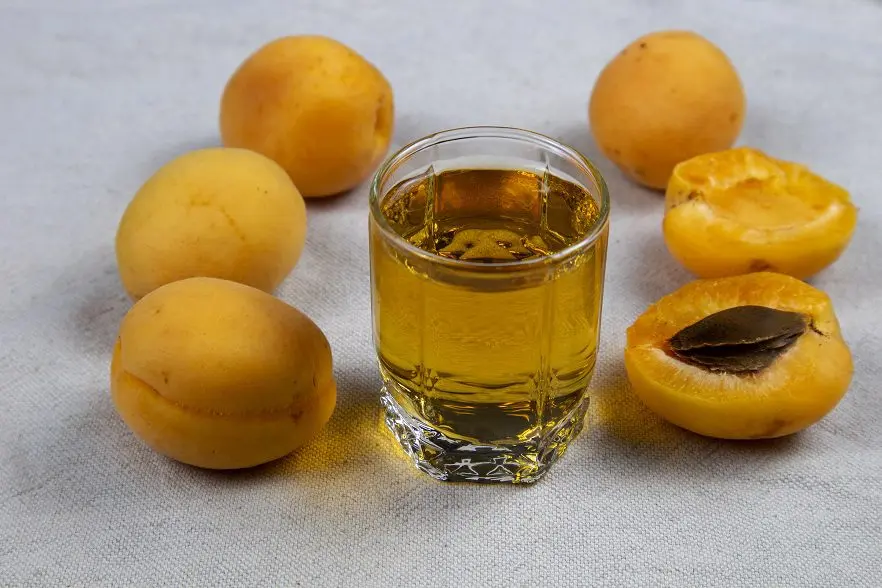Contents
Homemade apricot brandy is remembered for its persistent fruit aroma and mild apricot flavor with unobtrusive oak notes of aging in the aftertaste. For insisting, you can take an oak barrel or chips (chips). The second option is suitable even for residents of apartments who do not have the opportunity to store a barrel.
Theory
The natural sugar content of apricots is up to 11%, which means that with 10 kg of raw materials you will get a maximum of 1,2 liters of brandy with a strength of 40%, but in practice the yield will be 15-25% lower. To increase the amount of distillate, you can add sugar or fructose – 1 kg of these substances will additionally give 1,1-1,2 liters of moonshine 40% vol. But a large amount of sugar or fructose neutralizes the apricot flavor, so you have to find a compromise between quality and quantity. If there is a lot of raw materials, and it is sweet, you can make apricot brandy without sugar, then the aroma will be very rich. In not very sweet apricots, it is better to add up to 2 kg of sugar per 10 kg of fruit.
To maintain a mild taste and characteristic smell, apricots are best fermented with wine or special yeast for fruit brews. If there are none, you can not wash the fruits and then fermentation will start on wild yeast, which are on the skin of apricots. Another option is to make a starter from raisins or fresh berries. I do not recommend using baker’s or alcohol yeast, they give strong alcohol tones and a harsher taste.
It is really possible to replace the barrel with oak pegs (chips or wood chips). With the right approach, cask and brandy on wood chips cannot be distinguished. Chips can be prepared yourself from good wood or bought ready-made in home brewing stores.
Apricot brandy recipe
Ingredients:
- apricots – 10 kg;
- sugar (fructose) – 1-2 kg (optional);
- water – 5 liters plus 4 liters for each kilogram of sugar or fructose;
- yeast (wine or for fruit mash, sourdough) – for 15 liters of must.
Ripe and overripe apricots of any variety and size are required, even the smallest will do, it is important that the fruits are free of rot and mold. If possible, it is better to replace sugar with fructose, since it suppresses the smell of apricot less, and the distillate yield is about the same.
Braga preparation technology
1. Remove pits from apricots, they can give bitterness. If the fermentation is with wild yeast, do not wash the fruits.
2. By hand or otherwise, mash the apricot pulp to a puree state and add to the fermentation tank.
3. If necessary, add sugar (fructose). Pour in water, stir until sugar dissolves. The container must have at least 25% free space for foam and carbon dioxide.
4. Add yeast to the resulting wort (pre-diluted according to the instructions on the bag).
5. Cover the container with gauze. Transfer to a dark place at room temperature. Leave for 2 days. Once every 8-12 hours, stir with your hand or a wooden stick, drowning the surfaced skin and pulp in the juice. Without regular stirring, the mash can turn sour.
After a maximum of a day (usually after 4-12 hours), signs of fermentation should appear: foam, hiss and a characteristic smell, which means that the process is going well.
6. Install a water seal of any design on the neck of the fermentation tank. Leave apricot mash in a dark room at a temperature of 20-27 ° C until the end of fermentation.

Depending on the yeast, the sugar content of the must and the temperature, the fermentation will last 10-45 days. The end of the process is indicated by the absence of gas from the water seal (deflated glove) and a layer of loose sediment at the bottom. Ready mash is not sweet and slightly bitter.
Obtaining a clear apricot brandy
7. Drain the mash from the sediment and strain through several layers of gauze to remove the remnants of the skin and pulp, which can burn during the distillation process, which will spoil the taste of apricot brandy.
8. Distill the mash on a distiller (ordinary moonshine) for the first time at maximum speed without selecting “heads”. Collect distillate until the strength in the stream falls below 15-20% vol. The drink may turn cloudy, this is normal.
9. Measure the strength of the resulting distillate, determine the amount of pure alcohol (volume in liters, multiply the strength in percent, then divide by 100).
10. Dilute the distillate with water up to 18-20% vol. and make a second slow distillation. The first 8-10% of the volume of pure alcohol (calculated at the previous stage) should be collected separately, this is a harmful “head” fraction that cannot be drunk.
11. Select the main product (“body”) until the strength in the jet falls below 40%. This is clear apricot brandy. Then you can turn off the moonshine still or collect the rest of the distillate (“tails”) in a separate container and add it to a new portion of the mash before distillation.

Aged in barrel or on chips
12. If you plan to age in a barrel, dilute the apricot brandy to 60% by volume, to insist on pegs (chips, wood chips) the fortress should be 45%.
13. Pour the distillate into the barrel, close it and transfer it to storage in the basement. In the case of wood chips, pour the drink into glass jars, add homemade chips at the rate of 20 g per 1 liter (if the instructions indicate a different dosage, use it), then seal tightly.
14. The exposure time depends on the properties of the wood, the degree of roasting and how strong the oak tones are to be obtained. Apricot brandy usually spends 4-6 months in a barrel – 2-4 months, and on wood chips – XNUMX-XNUMX months.
Attention! Take a sample of the drink every week to check its organoleptic properties. When everything suits you, you immediately need to drain from the barrel into glass bottles or take out the wood chips.
15. After aging in a barrel, dilute the distillate with water to a drinking strength – 40-45% vol. When insisting on pegs, it is not necessary to dilute. If small particles of wood remain in the drink, filtration through gauze, cotton wool or a coffee filter will help. When stored in a glass sealed container, the shelf life of apricot brandy is unlimited.











